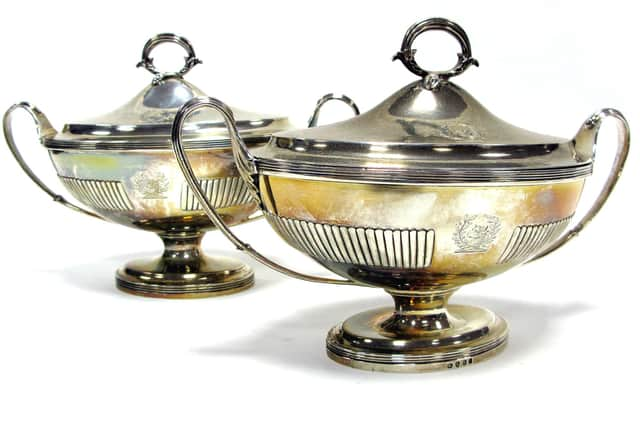Silver tureens have a rich history says Sheffield expert
and live on Freeview channel 276
There is little wonder therefore that the poor old tureen, once a highlight of the room’s table, has died a death.
I find this a great sadness, as I love the tureen.
Tureens were introduced in the early 18th Century, reflecting the French fashion for serving stews, soups and sauces.


Advertisement
Hide AdAdvertisement
Hide AdIt is said that the tureen was named after the 17th-century Vicomte de Turenne, who ate his soup from his upturned helmet.
In fact, the term derives from the French ‘terrine’.
The tureen became associated with a show of wealth and was often the most richly ornamented and expensive piece in the dinner service.
Soup tureens were introduced circa 1720, but examples pre-dating 1750 are rare.
Generally of heavy gauge silver, they were set on four cast feet, with cast scroll ring drop handles at the sides and a domed cover.
Advertisement
Hide AdAdvertisement
Hide AdSome of the rare early tureens from the 1730s and 1740s by famous French silversmiths are among the most magnificent pieces of Rococo silver made.
Tureens from the late 18th Century are generally oval and on a single pedestal foot.
They were influenced by architects such as Robert Adam who was producing designs to match the dining room furnishings.
The early 19th-century Regency tureens were by contrast much heavier and more richly decorated with lion mask handles and Classical ornaments.
Advertisement
Hide AdAdvertisement
Hide AdHowever, this was the time when gradually fewer silver tureens were made and the ceramic became much more fashionable.
Michael Dowse is a senior antiques and collectables valuer at Sheffield Auction Gallery, Windsor Road, Heeley.